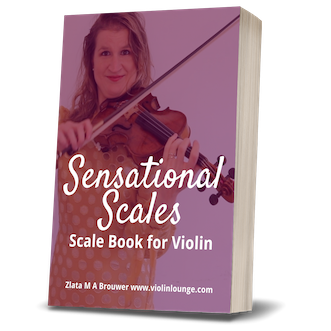Should you always avoid open strings in violin playing? | Violin Lounge TV #483
Never play open string notes on the violin? It depends!
Watch this video to learn when to play open strings and when to avoid them:
Perhaps you’ve heard a ‘rule’ that you should always avoid playing open strings on the violin and especially the E string
Sometimes the transparent and ringing sound of an open string can have a beautiful effect or an open string can be efficient to play.
Let’s go through some guidelines you can use to choose the best fingering for the piece that you play.
Which string is it? And how do the open strings sound on YOUR violin?
You’d avoid an open E string earlier than the other strings, because the E string can sound shrill. Also open strings sound different on different violins. Some open E strings actually sound nice. Other open E strings are very shrill. There are also differences for the other strings. When choosing your fingering, get to know your instrument.
From which musical period is the piece you play?
In baroque music the transparent and ringing sound of open strings, even an E string, can be very fitting. In romantic cantilena passages, you’d rather avoid the open strings, so you don’t break the musical line and can vibrate on all notes.
In the video above I give two examples: one from the A minor violin concerto by JS Bach and on from the Salut d’Amour by Elgar.
FREE Violin Scale Book
Sensational Scales is a 85 page violin scale book that goes from simple beginner scales with finger charts all the way to all three octave scales and arpeggios

Hi! I'm Zlata
Classical violinist helping you overcome technical struggles and play with feeling by improving your bow technique.
What are the surrounding notes?
Is the open string note you are considering in the middle of a romantic passage that asks for a lot of vibrato? Then this open string note might not fit in. However, if for a musical goal the note should stand out with an open strings, you can do it. Think about the function of the note between other notes: should it fit in or stand out? Does it still fit in if it’s an open string?
Is it a fast run or a cantilena passage?
In a fast run open string notes can fit in very well. They can be the easier fingering option, so you can get the run up to speed. Also the sound won’t stand out that much. Maybe you can even avoid a string crossings by playing an open string.
If you’re playing a cantilena passage with longer notes, you might want to choose for stopped notes. Maybe you can even play a phrase all on one string. It might be fitting to color all notes vibrato, which is not possible with open strings (I point out the exception of the Bruch concerto opening in the video).
Are you looking for tips to not accidentally hit other strings while playing violin?
Watch this video with 20 tips to avoid hitting other strings.
Was this helpful?
Share your thoughts and ideas in the comments below.


This video answers questions I didn’t even know I had. Really well explained. Thank you!
Wonderful!